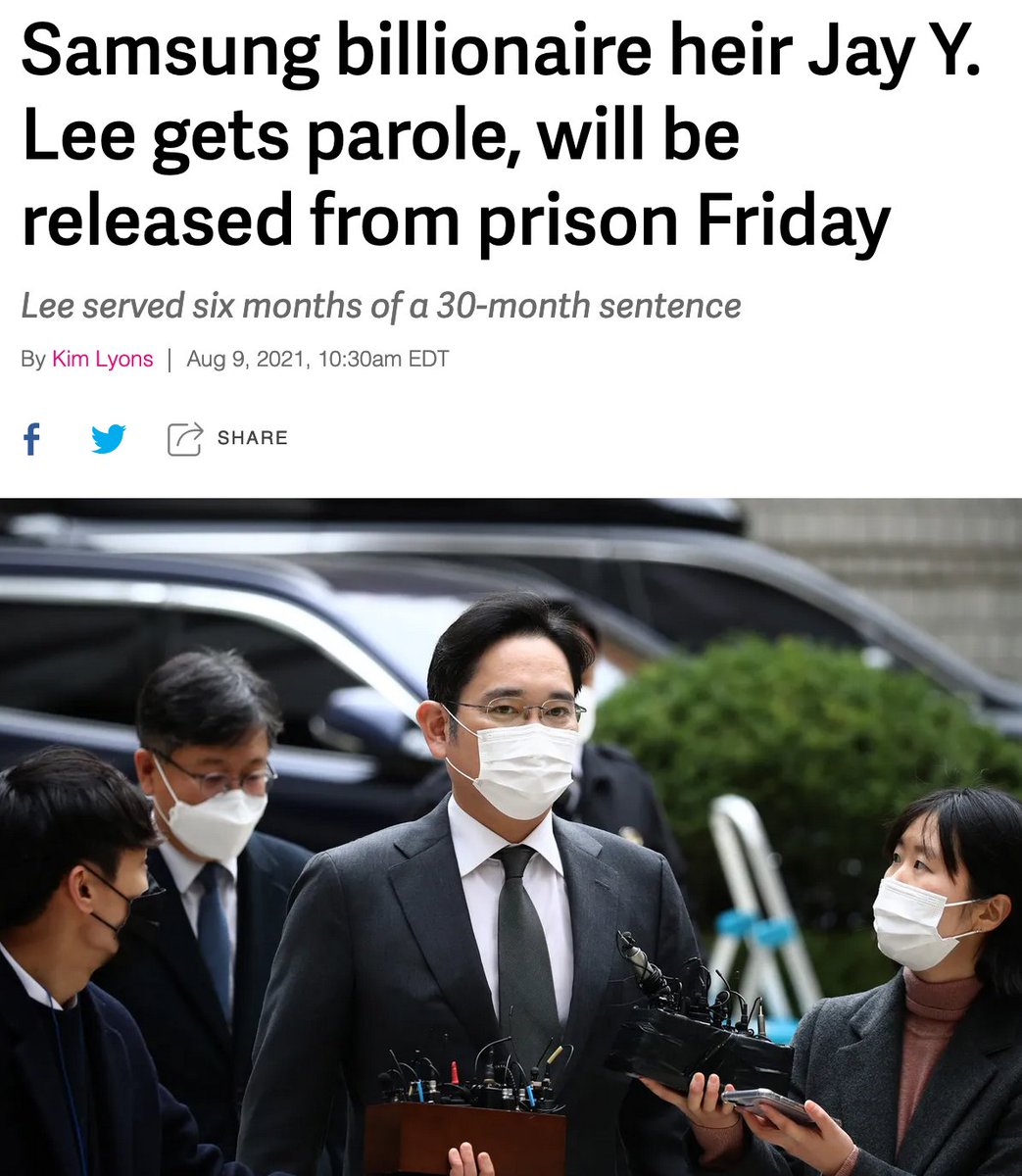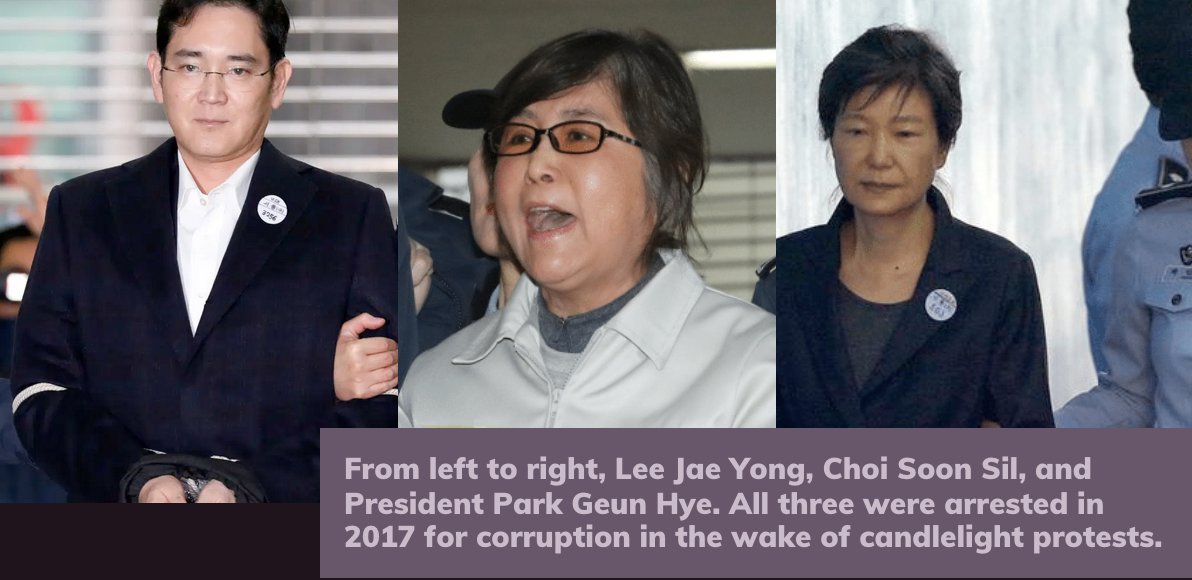
In recent weeks, some of the biggest wins of the Candlelight Movement have been undone.
Samsung heir Lee Jae Yong has been released from prison, and a major investigation into the Sewol ferry disaster has been closed. The Moon gov't beterays the movement that put it in power.

Samsung heir Lee Jae Yong has been released from prison, and a major investigation into the Sewol ferry disaster has been closed. The Moon gov't beterays the movement that put it in power.


Samsung vice chairman and heir Lee Jae Yong was accused of giving $40 million in bribes to President Park’s close associate to secure President Park’s support for a 2015 merger within Samsung. In Jan 2017, Lee was sentenced to 5 years in prison. 

Lee was released in Feb 2018, resentenced in 2021, and released again Aug. 13.
He was released months after the Ministry of Justice revised an internal regulation allowing prisoners to serve just 60% of their sentence before parole. Lee had completed 60% of his term by July.
He was released months after the Ministry of Justice revised an internal regulation allowing prisoners to serve just 60% of their sentence before parole. Lee had completed 60% of his term by July.

In May, Biden & Moon negotiated 2 Samsung deals: 1) $17 billion US semiconductor chip factory; & 2) Manufacturing contracts for the Moderna vaccine.
Despite protests, Moon’s office defended Lee’s release: “he will help the country with respect to semiconductors and vaccines”.
Despite protests, Moon’s office defended Lee’s release: “he will help the country with respect to semiconductors and vaccines”.

In 2014, over 200 school children died when Sewol ferry sank. The gov't, ferry captain & crew took no appropriate actions to save the lives of the people on board.
President Park and the rightwing gov't tried to control public opinion instead of helping victims & their families.
President Park and the rightwing gov't tried to control public opinion instead of helping victims & their families.

The Sewol ferry disaster was a major catalyst for the Candlelight Movement which swept Moon Jae-In to power.
But justice for Sewol’s victims is being deferred. The Special Prosecutor's Office closed its investigation into possible evidence tampering related to the disaster.
But justice for Sewol’s victims is being deferred. The Special Prosecutor's Office closed its investigation into possible evidence tampering related to the disaster.

In addition, the city of Seoul is demolishing the Sewol victims’ memorial hall in order to renovate Gwanghwamun Square. Victims’ families are protesting the decision. 

The Candlelight Movement showed the power of the Korean masses and the limits of reform. The Moon Jae-In government refuses to uphold the demands of the very movement that brought it to power. The corruption and austerity of the Park government has continued under Moon.
The ROK state will not root out corruption or protect the masses from capitalist exploitation because its purpose is to serve monopoly capital & US empire.
We cannot depend on a neocolony that defends the interests of the bourgeoisie to liberate us.
We cannot depend on a neocolony that defends the interests of the bourgeoisie to liberate us.
• • •
Missing some Tweet in this thread? You can try to
force a refresh





















